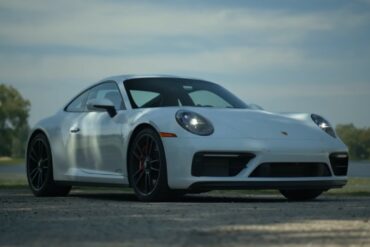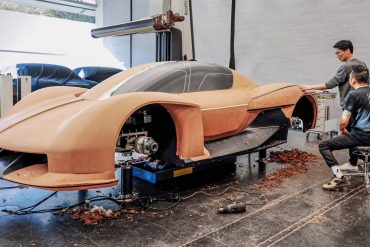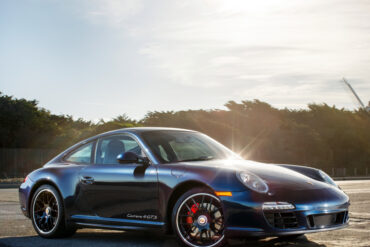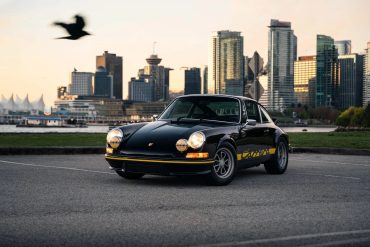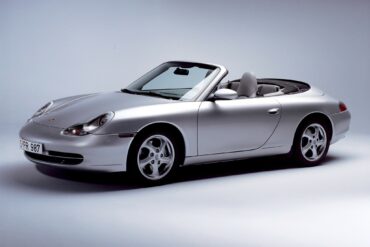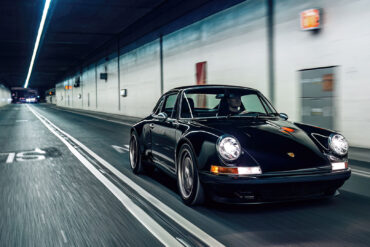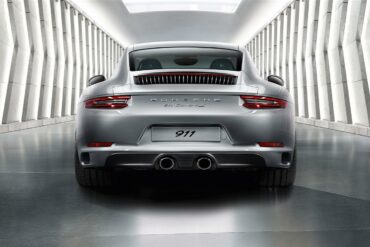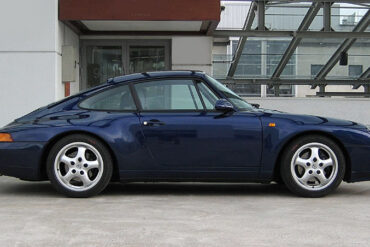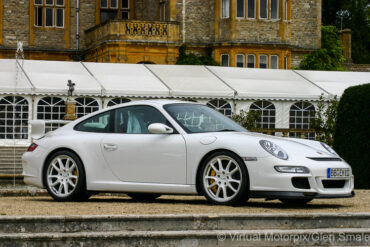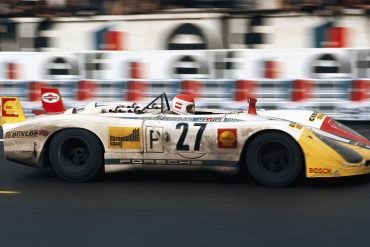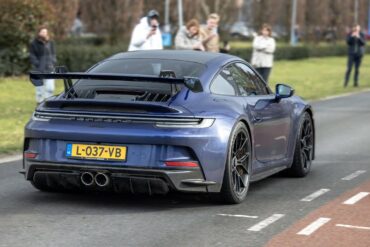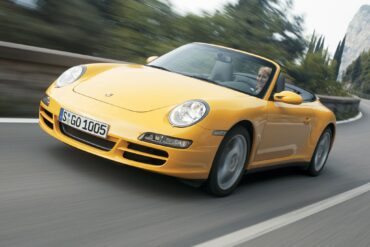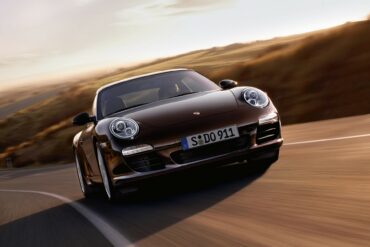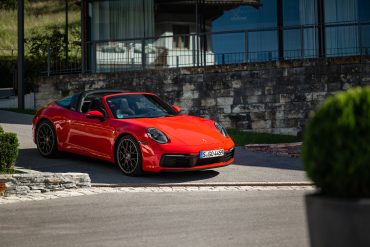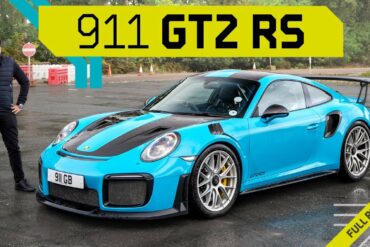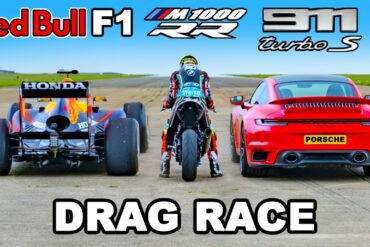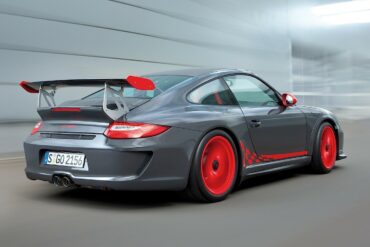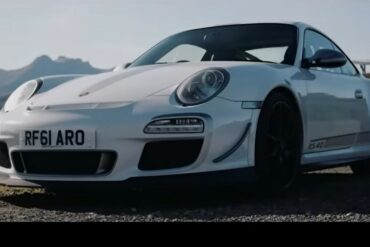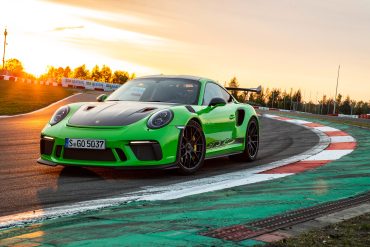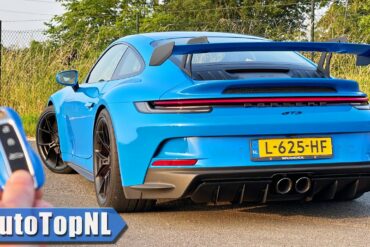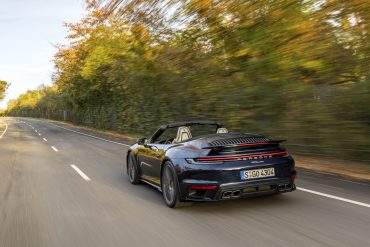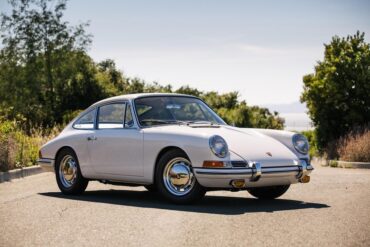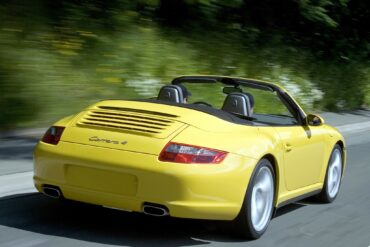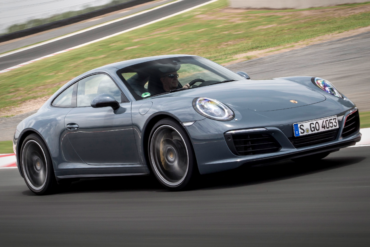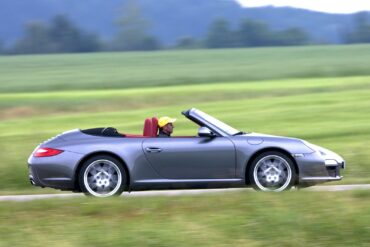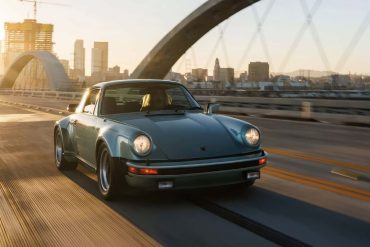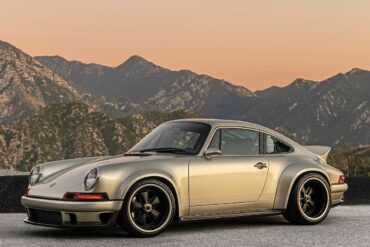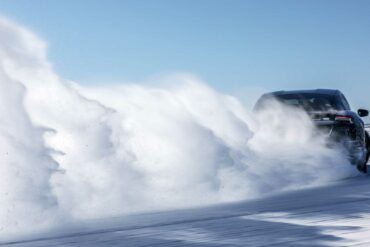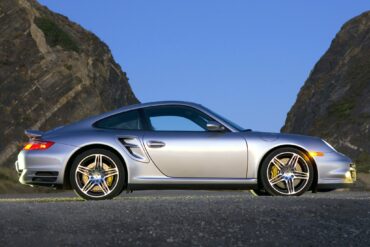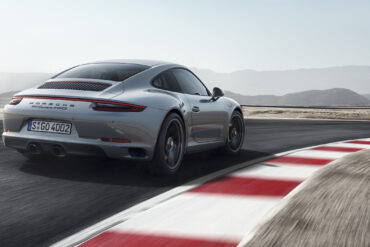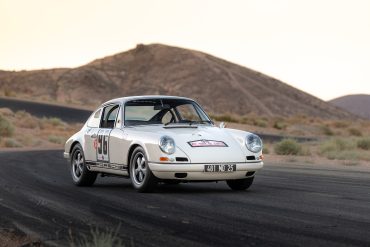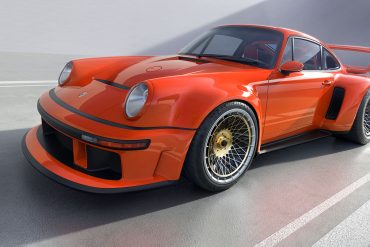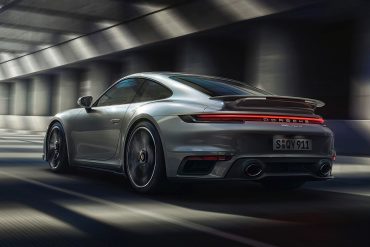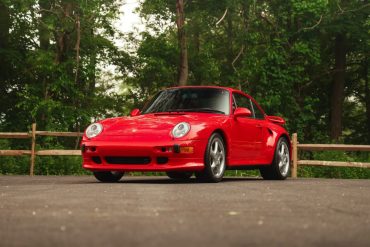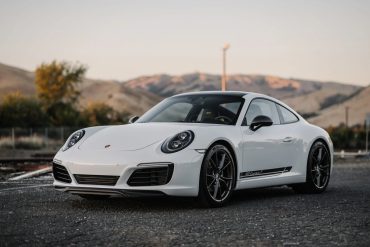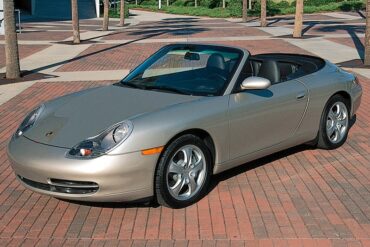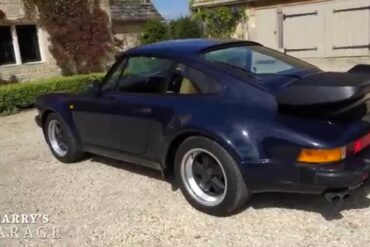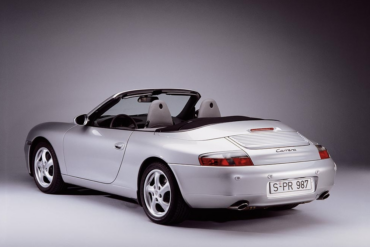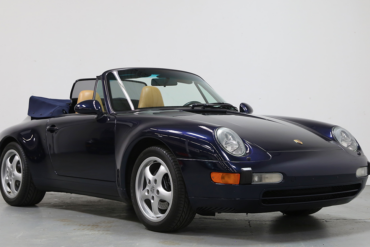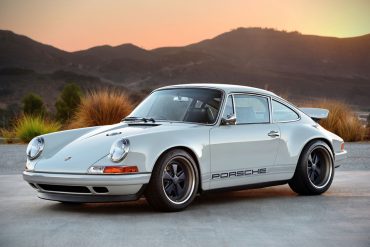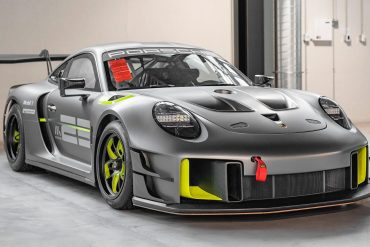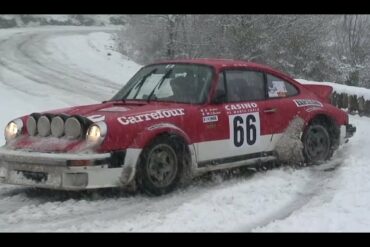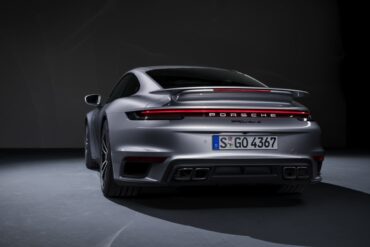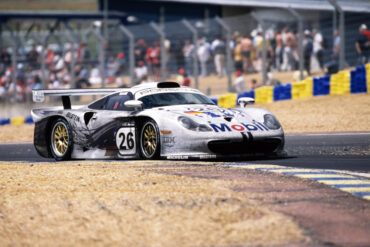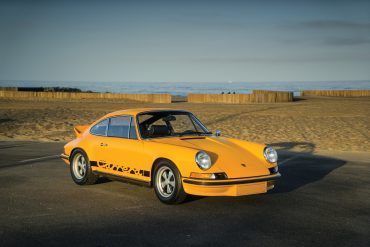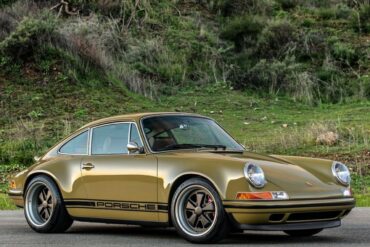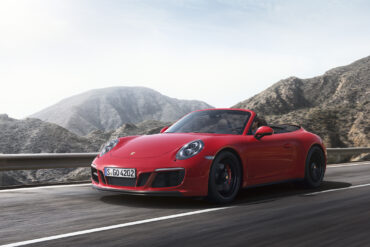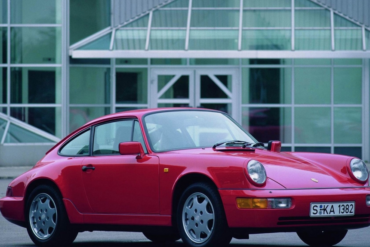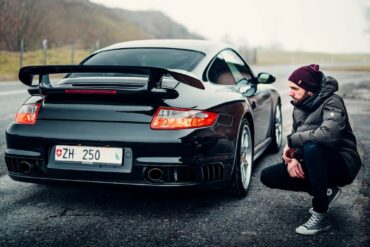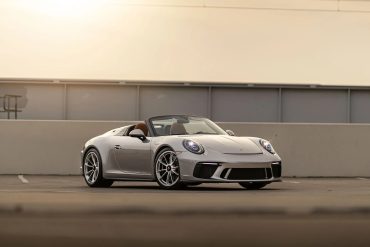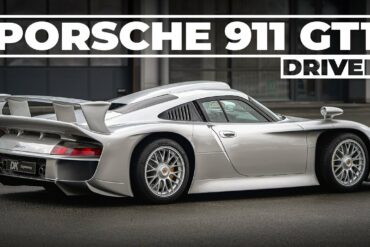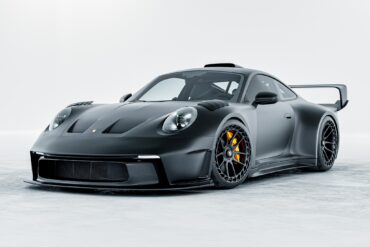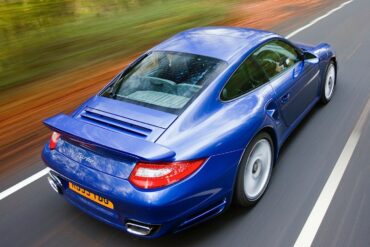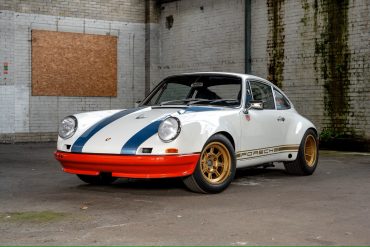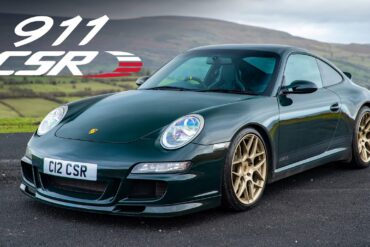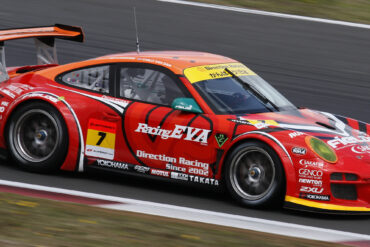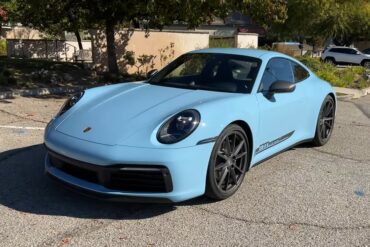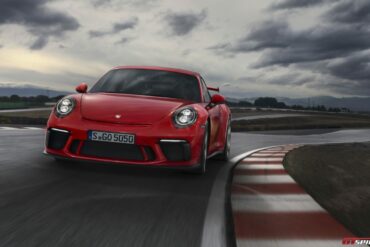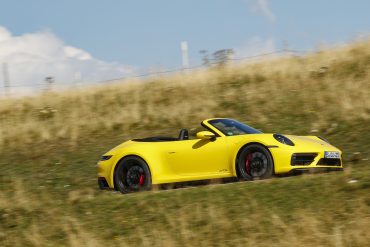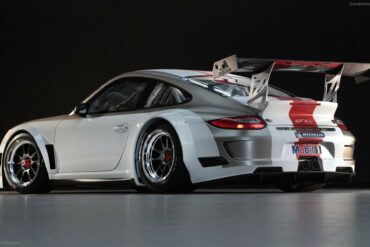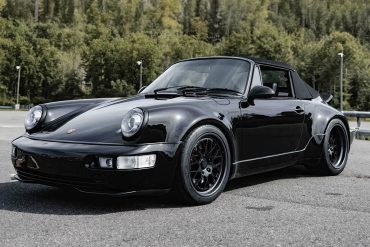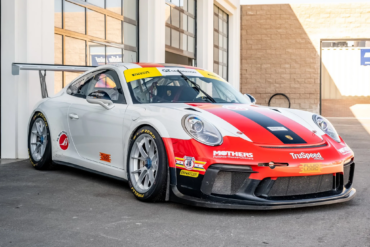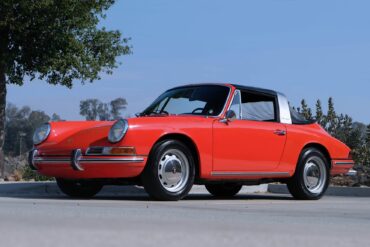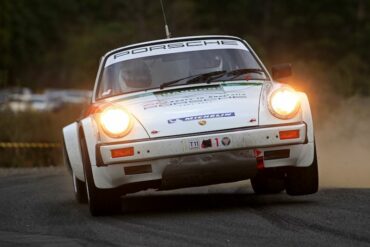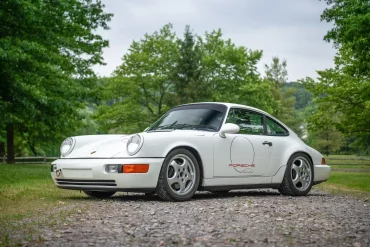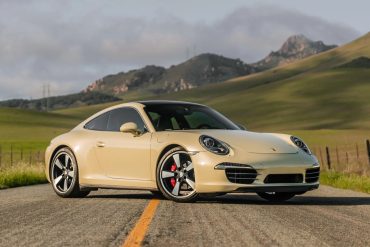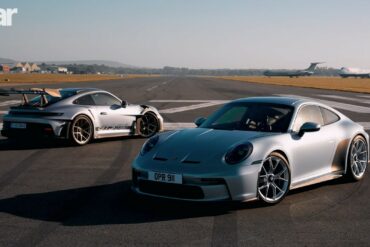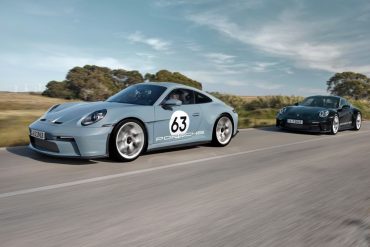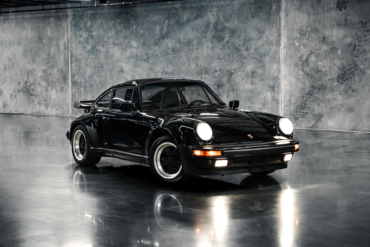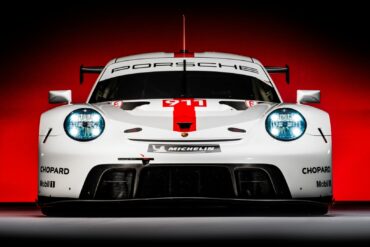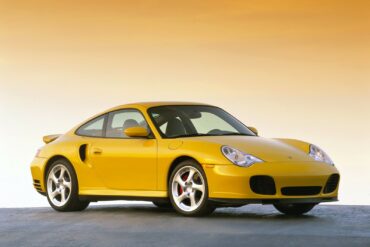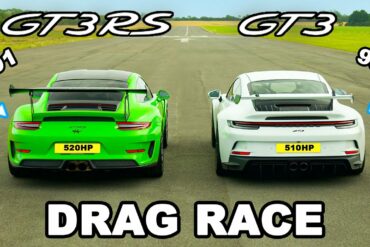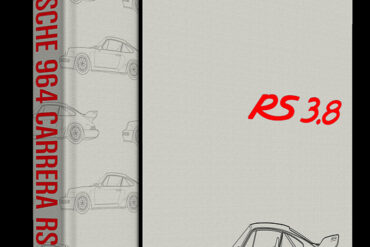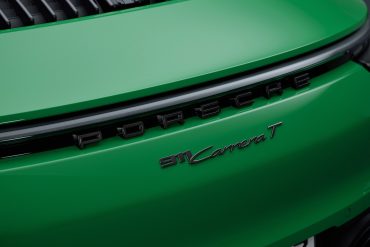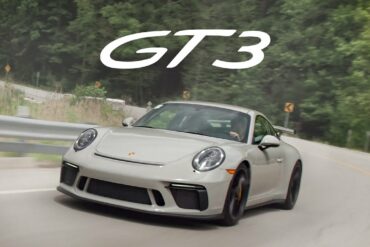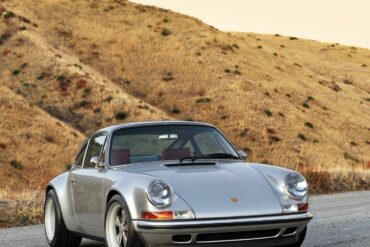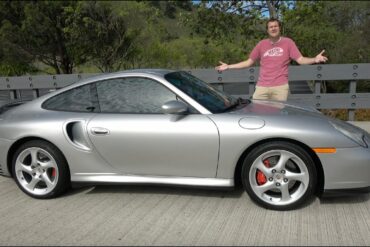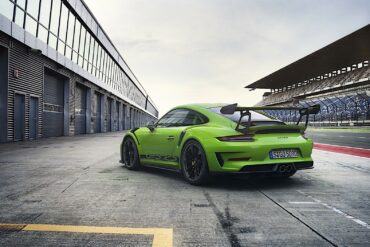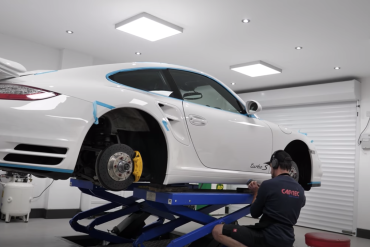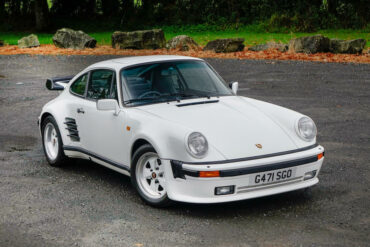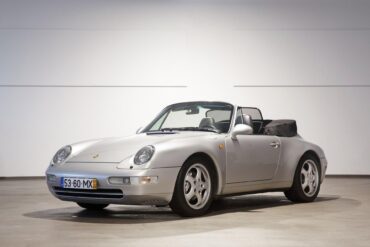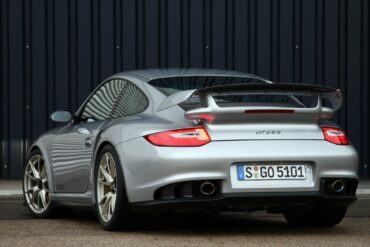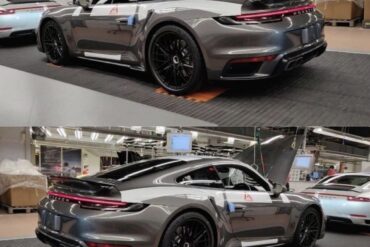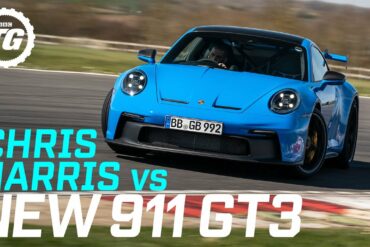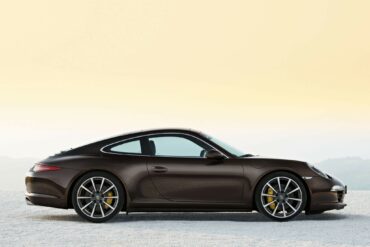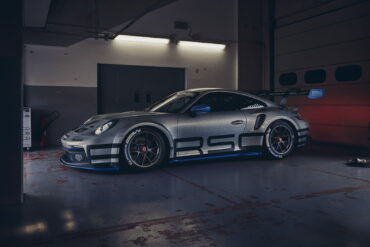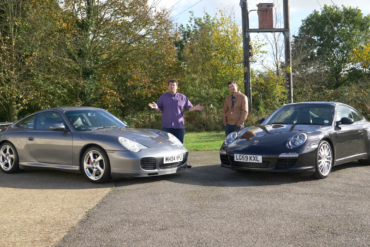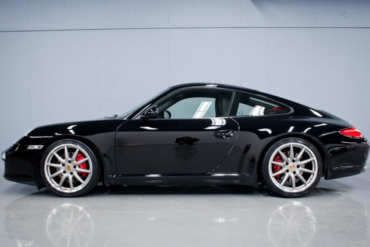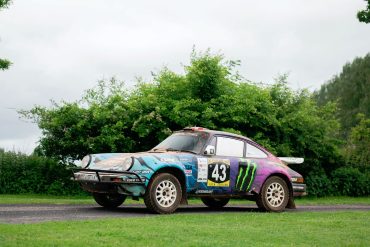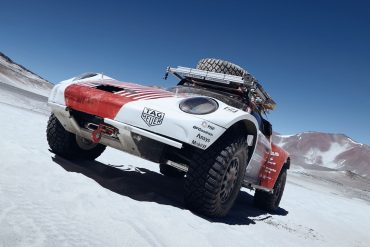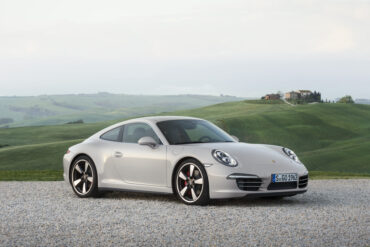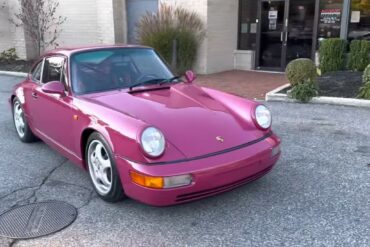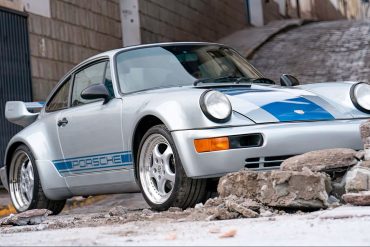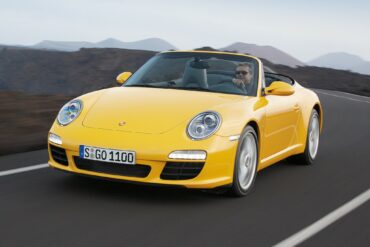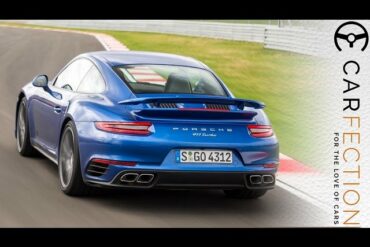Join Mark and Jack as they discuss the details about the Porsche 911 (992) GTS, a great alternative to the...
Porsche 911
All
- Porsche 912
- 911 Carrera RS 2.7
- Porsche 901 (911)
- Porsche 911 (F-Series)
- Porsche 911 (991)
- Porsche 911 (G-Series)
- Porsche 911 (964)
- Porsche 911 (993)
- Porsche 911 (996)
- Porsche 911 (997)
- 911 Speedster Concept
- Porsche 911 (992)
- 964 Carrera 2
- 964 Carrera 4
- ’30 Jahre’ Anniversary
- 964 Speedster
- 964 Turbo
- 964 Carrera RS
- 964 Carrera Cup
- 964 RSR
- 993 Carrera
- 993 Carrera 4
- 911 Edition 50
- 993 Carrera 4S
- 911 2.0 Bertone Roadster
- 993 Carrera S
- 993 Targa
- 992 Sport Classic
- 993 Turbo
- 996 Carrera
- 993 Carrera RS
- 992 America Edition 911
- 996 Carrera 4
- 993 GT2
- 996 Targa
- 993 Carrera Cup
- 996 Carrera 4S
- 996 Turbo
- 996 Turbo S
- 996 GT3
- 996 GT3 RS
- 996 GT2
- 996 GT3 Cup
- 996 GT3 R
- 996 GT3 RSR
- 997 Carrera
- 996 GT3 RS Race
- 997 Carrera S
- 997 Carrera 4
- 997 Carrera 4S
- 997 Targa
- 911 Carrera 3.0 Coupe (G-Series)
- 997 Targa 4S
- 997 Turbo
- 997 Turbo S
- 997 GT2
- 992 Carrera T
- 997 GT2 RS
- 997 Speedster
- 997 Carrera GTS
- 992 Dakar
- 997 Carrera 4 GTS
- 997 GT3 Cup
- 997 GT3 R
- 997 GT3 RSR
- 997 GT3
- 997 GT3 RS
- 997 GT3 R Hybrid
- 991 Carrera
- 991 Carrera 4
- 991 Carrera S
- 991 Carrera 4S
- 991 Targa 4
- 991 Targa 4S
- 991 Turbo
- 991 Turbo S
- 991 Carrera GTS
- 991 Carrera 4 GTS
- 991 Targa 4 GTS
- 991 911 R
- Porsche 992 GT2 RS
- 991 GT3
- 991 GT3 RS
- 991 GT2 RS
- 991 Speedster
- 991 GT3 R
- 991 GT3 Cup
- 991 RSR
- 991 Carrera T
- 992 Carrera 2
- 992 Carrera 4
- 992 Carrera S
- 992 Carrera 4S
- 992 Targa 4
- 992 RSR
- 992 Targa 4S
- 992 Carrera GTS
- 992 Carrera 4 GTS
- 992 Targa 4 GTS
- 992 Turbo
- 992 GT3 R
- 992 Turbo S
- 992 GT3
- 992 GT3 Touring
- 992 911 S/T
- 911 (G-Series)
- 992 GT3 RS
- 992 GT2 RS
- 992 GT3 Cup
- 911 Carrera 3.0 (G-Series)
- 911 S (G-Series)
- 911 Carrera RSR 2.8
- 911 SC (G-Series)
- Porsche 992 GT3 R Rennsport
- 911 S/T
- 911 Carrera 3.2 (G-Series)
- 911 (Base Model)
- 911 Turbo (930)
- 911 SC Safari
- 911 L
- 911 Carrera RSR Turbo 2.1
- 911 T
- 911 Carrera RSR 3.0
- 911 E
- 911 S
- 911 SC San Remo
- 911 Carrera 3.2 Clubsport
- 911 R
- Porsche 953
- 911 Carrera RS 3.0
- 911 T/R
- 911 Carrera 25th Anniversary
- 911 SC RS
- 911 Turbo LE
- 911 Carrera Commemorative
- 911 Carrera 2.7 (G-Series)
- 911 3.2 Speedster
- 911 Turbo 2.7
- 964 Turbo S
Tools of the trade Metal blades and scrapers, delicate wire loops, wooden sculpting tools, and brushes – this suitcase contains...
2011 Porsche 911 Carrera 4 GTS Coupe (997) Technical Specifications Engine Type Flat 6 Induction Normally-aspirated Cooling Water-cooled Valvetrain Double overhead...
This 1978 Porsche 911 SC coupe was transformed into the style of a 1973 Carrera RS lightweight model during a...
The flat six in the Carrera 996 was a newly-developed flat-six engine that offered 300 hp. It was mated as standard with a six-speed manual. A 5-speed automatic (Tiptronic) with manual override to shift gears was on the options list. As always, the Carrera 2 was rear-wheel-drive. Designed as a grand tourer, the Porsche Carrera Cabriolet was the base version for the open-top 911 range in 1998. The retractable roof was able to be stowed away in 20 seconds at speeds of up to 50 kph (31 mph), like the rest of the 911 convertible range. With the roof up, the car was tested in the wind tunnel at speeds of up to 338 kph (210 mph).
Theon Design has revealed the latest bespoke Porsche 911 (964) based commission to emerge from its Oxfordshire workshops: ITA001. Created...
2019 Porsche 911 Carrera S Coupe (991.2) Technical Specifications Engine Engine layout Rear Engine Engine type Boxer, twin-turbo Cylinders 6 Valves...
1998 Porsche 911 Carrera (993) Technical Specifications Engine Type Flat 6 Induction Naturally Aspirated Cooling Air/oil-cooled Valvetrain Single overhead camshaft...
Broad Arrow’s All-Porsche auction will take place with Air|Water on Saturday, April 27th, and feature approximately 70 Porsches similar to...
Listen to this Porsche 992 GT3 fitted with a full Akrapovic exhaust system....
The Carrera 4 Cabriolet was released with the rest of the 4 and 4S models as 2006 model year cars. With a sure-footed, four-wheel drive powertrain as well as that "wide-body" stance, and with tops that open or close at the touch of a button, the Carrera 4 Cabriolet really started to make the case it could do it all. The wide look gave the 4 a widened track, larger wheels and tires and four-wheel-drive powertrain that gives more dynamic stability, especially in inclement weather conditions. Developed at the same time as the coupe.
2012 Porsche 911 Carrera S Coupe (997.2) Technical Specifications Engine Type Flat 6 Induction Normally-aspirated Cooling Water-cooled Valvetrain Double overhead camshafts...
2022 Porsche 911 Targa 4S (992) Technical Specifications Model 911 Targa 4S Design and cylinders Twin-turbocharged boxer 6 Bore 91.0...
991.2 GT2 RS – Most Powerful 911 Driven Porsche‘s Most Powerful 911 ever!! The Legendary GT2 RS! When a 911 Turbo...
Affordable Supercars Drag Race HERE.WE.GO! Formula 1 Car vs BMW M 1000 RR vs Porsche 911 Turbo S! That’s right, David...
2010 Porsche 911 GT3 RS (997.2) Technical Specifications Engine Type Flat 6 Induction Normally-aspirated Cooling Water-cooled Valvetrain Double overhead camshafts Injection...
Join Jethro Bovingdon as he drives through beautiful sceneries of Scotland in a Porsche 911 (997) GT3 RS 4.0. ...
When automotive enthusiasts are asked to describe the pinnacle of the Porsche 911, the 991.2 GT3 RS overwhelmingly dominates the...
All Porsche 911s are turbocharged these days but the Turbo model is something special. It gets the twin-turbo 3.7-liter flat six with tons of power and a huge $33,000 savings over the Turbo S. Thanks to an output of 573 hp, marking an increase of 32 hp over the predecessor, the new 911 Turbo Cabriolet accelerates from 0 to 60 mph in 2.8 seconds (0.2 seconds faster than before). The Turbo Cabriolet basically handles like a coupe.
The first generation of the Porsche 911 begins in late 1964 and goes through 1968. The "base" model was an instant hit. During this period, Porsche would make continuous improvements and tweaks to the body, to its short wheelbase (SWB) chassis, and to its 2.0 liter flat six engine. Model year 1968 would be the last for the early 911, a transition that would begin with the introduction of the higher output 911S in 1967, followed by the 911L and a new entry level 911T in 1968, and finally, the 911E in 1969. The base 911 was available as both a Coupe and Targa (starting in '67).
2006 Porsche 911 Carrera 4 Cabriolet (997) Technical Specifications Engine Type Flat 6 Induction Normally-aspirated Cooling Water-cooled Valvetrain Double overhead...
2017 Porsche 911 Carrera 4 Coupe (991.2) Technical Specifications Engine layout Rear Engine Engine type Boxer, twin-turbo Cylinders 6 Valves per...
2010 Porsche 911 Carrera 4S Cabriolet (997.2) Technical Specifications Engine Type Flat 6 Induction Normally-aspirated Cooling Water-cooled Valvetrain Double overhead camshafts Injection...
In the distinguished circles of Porsche enthusiasts, Magnus Walker’s 1977 Porsche 930 Turbo Carrera holds an esteemed position. This automotive...
Singer Vehicle Design – Caroline Commission Today, we take a closer look at the Singer Vehicle Designs Caroline Commission. First...
Porsche Targeting Production Car Lap Records Away From the ‘Ring While the Nürburgring unarguably remains the de facto proving grounds...
2008 Porsche 911 Turbo (997) Technical Specifications Engine Type Flat 6 Induction Twin-turbocharged Cooling Water-cooled Valvetrain Double overhead camshafts Injection Port...
2019 Porsche 911 Carrera 4 GTS (991.2) Technical Specifications Engine Engine layout Rear Engine Engine type Boxer, twin-turbo Cylinders 6 Valves...
Based on the 911 S, the 911 R was produced by Porsche to compete in the FIA’s GT 2.0 category....
DLS Turbo restoration services are imagined with each owner to celebrate the victorious 934/5 endurance racers of the 1970s. In...
For almost 50 years, the Turbo models have enjoyed an exalted position at Porsche. They stand for a distinctively high...
The final air-cooled 911 Turbo from Porsche was the Type 993 Turbo S, offering a remarkable conclusion to that era....
To the untrained eye, the Carrera T may appear to be a bare-bones and sparingly equipped 911 at first glance. With a...
1999 Porsche 911 Carrera 4 Cabriolet (996) Technical Specifications Engine Type Flat 6 Induction Normally-aspirated Cooling Water-cooled Valvetrain Double overhead camshafts...
A Legend Reviews A Legendary Car...
1998 Porsche 911 Carrera Cabriolet (996) Technical Specifications Engine Type Flat 6 Induction Normally-aspirated Cooling Water-cooled Valvetrain Double overhead camshafts...
1996 Porsche 911 Carrera Cabriolet (993) Technical Specifications Engine Type Flat 6 Induction Naturally Aspirated Cooling Air/oil-cooled Valvetrain Single overhead...
Bike vs Supercar Drag Race It’s time for a supercar vs superbike DRAG RACE! Mat’s lining up in his Porsche...
Singer Vehicle Design has entered into a historic agreement with Porsche Motorsport North America. It is a partnership that will...
Porsche Motorsport celebrated the 25th anniversary of Manthey-Racing GmbH with a remarkable special edition model known as the 911 GT2...
Best of Porsche Rally Cars...
Porsche Option Codes – Porsche 911 (2021 Model Year) Looking to decode your 2021 Porsche 911 option codes? Want to...
1997 Porsche 911 GT1 Evolution Technical Specifications Engine: Water-cooled six-cylinder four-stroke horizontally opposed engine, two turbochargers, two controlled metal-substrate catalytic...
Revealed at the 1972 Paris Auto Show, the Carrera 2.7 RS was a special model used to homologate the 911 in Group...
Singer Vehicle Design – New Zealand Commission Today, we take a closer look at the Singer Vehicle Designs New Zealand...
The GTS 4 Cabriolet reminds us how awesome Porsche cars are. This is a 911 that can be used as a regular car, an all weather convertible 911 that does everything really well. And when you want to push hard, the car transforms into a true sports car, a car that no enthusiast will ever complain about. Drop-top 911s have always played a supporting role to the fixed roof versions, but in GTS specification the Cabriolet is now better than ever.
Porsche added the rear wheel drive Carrera 2 variant to the range in 1990. It was developed alongside the 964 Carrera 4, Porsche waited a year to release the Carrera 2 as a 1990 model year car. Like the Carrera 4, the Carrera 2 was available as a coupé, Targa or Cabriolet. Overall, the Carrera 2 packed almost the same technical specifications as the Carrera 4 model. The engine was the same 3.6 liter unit which produced 250 horsepower and a maximum speed of 162 mph. Looked like C4 but was 200 lb lighter and more fun to drive.
Taking the legendary 997 GT2 for a short blast In this weeks coffee run episode I take the legendary 997...
Since its debut in 1954, Porsche has reintroduced the Speedster model several times, the latest being the 991 iteration. The...
Porsche 911 GT1 Review The McLaren F1, the Porsche 911 GT1 and the Mercedes CLK GTR are three of the...
One-of-a-kind 992 Porsche GT3 Black Panther by Carbonerre Project with ZP.FORGED 23 Deep Concave + Centerlock wheels. Source: Z-Performance Wheels...
2010 Porsche 911 Turbo (997.2) Technical Specifications Engine Type Flat 6 Induction Twin-turbocharged Cooling Water-cooled Valvetrain Double overhead camshafts Injection Direct Fuel...
The Porsche 911 ‘STR II’ is a custom creation designed by the renowned Magnus Walker. It pays tribute to the...
Henry Catchpole Reviews A Bespoke 911 CSR ...
2010 Porsche 911 GT3 R (997) Technical Specifications Type Racing Car Released at 2010 Autosport International Built at Weissach, Germany Engine...
Miles takes the 2023 Porsche 911 Carrera T Manual for a test drive and gives his expert review about this...
A 911 for the road and track – the new Porsche 911 GT3 Stuttgart. The Porsche 911 GT3 delivers motorsport-like performance,...
2022 Porsche 911 Carrera GTS Cabriolet (992) Technical Specifications Model 911 Carrera GTS Cabriolet Design and cylinders Twin-turbo boxer 6 Number...
2010 Porsche 911 GT3 RSR (997) Technical Specifications engine B6 w/Dry Sump Lubrication, 29.5 mm Air Restrictors position Rear, Longitudinal...
For its inaugural venture, Sacrilege Motors meticulously refurbished and converted a Porsche 911 America Roadster to electric propulsion. This automobile...
From 1990 to 2019, Porsche has already produced over 4,200 units of the 911 GT3 Cup and each of them...
1968 – 1969 Porsche 911 T Targa 2.0 (SWB & LWB) Technical Specifications Engine Type Flat 6 Induction Normally-aspirated Cooling...
Röhrl and Geistdörfer very nearly won that San Remo Rally, after a comeback that would have been one for the ages. Röhrl and Geistdörfer were up against a field of faster, more powerful four-wheel-drive cars in their rear-wheel-drive Porsche 911 SC, and somehow managed to pull within an eyelash of victory. Unfortunately, a broken driveshaft forced the pair to retire, leaving Michele Mouton's Audi Quattro to run away with the race.
Manufactured by Porsche Motorsport for use in their U.S. customer racing series, the Porsche 964 Carrera Cup vehicles originated from...
The 2014 50th Anniversary Edition 911 was built by Porsche to commemorate the 911’s birthday, 50 years after its production...
Watch CAR Magazine’s James Dennison as he breaks down the features of the Porsche 911 GT3 RS and takes it...
Porsche is a company that loves special editions, this is something we all know. However, it is only once in...
Who will win when you drag race a a tuned Porsche 911 Carrera 4S against an Audi R8 V10 Performance...
Bid to get the chance to acquire a 1987 Porsche 911 Turbo Coupe at auction with Bring a Trailer! With...
(2019-2021) Porsche 911 RSR (991.2) Technical Specifications Technical data Porsche 911 RSR model year 2019 Engine Water-cooled six cylinder boxer...
2003 Porsche 911 Turbo (996) Technical Specifications Engine Type Flat 6 Induction Twin-turbocharged Cooling Water-cooled Valvetrain Double overhead camshafts Injection...
Two of our favorites duke it out...
Porsche’s roadgoing model line-up has seldom, if ever, been very far removed from the company’s motorsport programme. This thread can...
2023 Porsche 911 Carrera T (992) Technical Specifications Model 911 Carrera Carrera T Design and cylinders Twin-turbo boxer 6 Number...
2019 Porsche 911 Speedster (991.2) Technical Specifications Engine Naturally aspirated flat-six (boxer) engine No of cylinders 6 Valves/cylinders 4 Displacement 3,996...
One of the BEST Sportscars Money Can Buy We go for a drive in the 2018 Porsche 911 GT3. Our...
Singer Vehicle Design – Mexico Commission Today, we take a closer look at the Singer Vehicle Designs Mexico Commission. At...
Doug DeMuro Reviews the 996 Turbo The Porsche 911 Turbo (996) is an amazing bargain. Today I’m reviewing the 996...
2018 Porsche 911 GT3 RS (991.2) Technical Specifications Engine Engine Type Aluminium horizontally opposed and naturally aspirated engine Displacement 3996 cm3...
Detailing a 997.2 Turbo S – Paint Correction, Wheels Off + Modesta Coatings We all know how obsessed we are...
1989 Porsche 911 Turbo Limited Edition (911) Technical Specifications Engine Flat 6 Position Rear Longitudinal Aspiration Natural Fuel Feed Bosch...
1998 Porsche 911 Carrera 4 Cabriolet (993) Technical Specifications Engine Type Flat 6 Induction Naturally Aspirated Cooling Air/oil-cooled Valvetrain Single...
2011 Porsche 911 GT2 RS (997) Technical Specifications Engine Type Flat 6 Induction Twin-turbocharged Cooling Water-cooled Valvetrain Double overhead camshafts Injection Port...
The Images Look Straight from the Assembly Line Here’s your first look at the 2020 Porsche 911 Turbo (992). The leak...
Top Gear 992 GT3 Review Petrolheads, assemble: it’s a new 992 Porsche 911 GT3. Which is basically like saying ‘it’s...
2015 Porsche 911 Carrera 4S (991) Technical Specifications Engine Type Flat 6 Induction Normally-aspirated Cooling Water-cooled Valvetrain Four overhead camshafts, four...
The Porsche Mobil 1 Supercup features the Porsche 911 GT3 Cup, the world’s best-selling race car. For this season, it’s the new generation. 510 hp, optimised intake manifold, electronic gearshift and power steering, fully digital cockpit, larger rear wing, and a double-wishbone front axle. This is a meaningfully upgraded race car. The new 911 GT3 Cup is taking on a great legacy. And it has already proven itself!
Which Is a Better First Porsche? 996 C4S vs 997.2 C2 If you’re looking to buy your first 911, and...
Porsche Option Codes – Porsche 911 (2009 Model Year) Carrera/Carrera S/Carrera 4/Carrera 4S, Coupé/Targa/Cabriolet Looking to decode your 2009 Porsche...
Collecting Cars is currently offering a 1978 Porsche 911 SC ‘Safari’ by Tuthill Porsche. It is a great custom competition...
22,093 feet above sea level– no car has ever gone higher. On December 2, 2023, racing driver Romain Dumas set...
The 2014 50th Anniversary Edition 911 was built by Porsche to commemorate the 911’s birthday, 50 years after its production launch in 1964. In homage to 1963, the year the 911 debuted at the 1963 Frankfurt Motor Show, production was limited to 1,963 units. The 50th Anniversary uses the wider body from a Carrera 4S (but remains only rear-wheel-drive) and is lower than a standard Carrera by 10mm. The 20 inch-alloys are a modern take on the original Fuchs wheels, and the seats are finished in “Pepita” cloth. Includes Porsche Active Suspension Management (PASM), sports exhaust and powerkit tickled 430 hp flat six.
Despite its focus on corners, the Porsche 911 Turbo S is also a straight-line beast. With 640 horsepower and all-wheel...
Autosport Designs takes the Porsche 911/964 RS N/GT Clubsport for a test drive. One of only 290 examples produced and...
After debuting in its famed role in “Transformers: Rise of the Beasts”, the Autobot Mirage and the movie car, a...
The 911 Carrera Cabriolet is a true Porsche, from top to bottom. Like the rest of the range, the base Cabriolet got a mild refresh in terms of design that made it more modern and a little more crisp. The engine was upgraded, now with direct direction. The direct-injection 3.6-liter engine also got new air filters, a more free-flowing exhaust system, and reduced engine friction, making it more powerful than before. It has peak power of 339 bhp @ 6500 rpm and torque of 287 ft lbs @ 4400 rpm. The Carrera equipped with PDK covers 0-60 mph in 4.5 seconds and runs to a top speed of 179 mph.
Carfection Reviews the 911 Turbo S (991.2) The new 911 Turbo S is a very, very fast car. Its predecessor...


